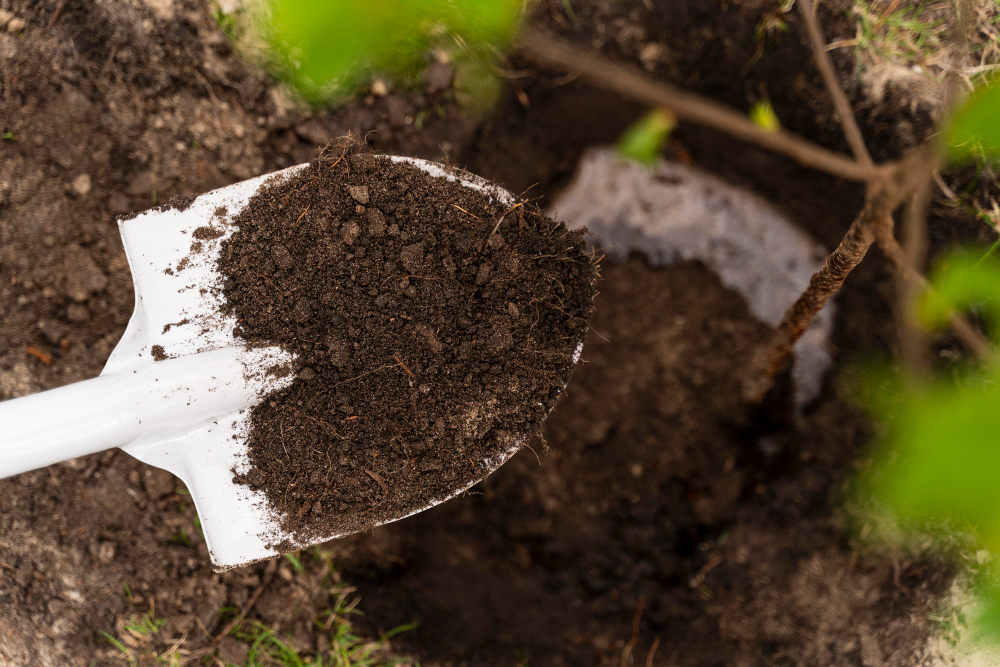Growing Vegetables in Small Spaces
Container gardening has opened new doors for those who want to grow their own vegetables but have limited outdoor space. Whether you’re working with a tiny balcony, a small patio, or even a windowsill, this method allows you to cultivate fresh produce right at home. By rethinking traditional garden layouts and employing innovative techniques, container gardening transforms previously unusable spaces into productive, eco-friendly havens of leafy greens, herbs, and vegetables. Through careful selection of containers, strategic plant choices, and proper nutrient management, it’s possible to achieve high yields, reduce waste, and support a more sustainable lifestyle.
Understanding the Basics of Container Gardening for Beginners
Before diving into the world of container gardening, it’s important to understand its core principles. Unlike conventional gardening that relies on the ground, container-based setups involve growing plants in pots, boxes, or other suitable vessels. This approach provides greater flexibility, as you can move containers as needed, control soil quality, and optimize growing conditions for each crop.
Key Advantages of Growing Vegetables in Containers
- Space Efficiency: Container gardens fit into compact areas, making them perfect for apartment balconies, small terraces, or rooftops.
- Improved Soil Quality: With container gardening, you control the soil mix, ensuring proper nutrients and a healthy environment for roots.
- Mobility and Accessibility: Containers can be moved around to catch sunlight, avoid extreme weather, or bring plants indoors as seasons change.
- Reduced Weeds and Pests: Elevated containers are less prone to soil-borne weeds and pests, simplifying maintenance.
For more insights into nurturing healthy soil in limited areas, consider reading our article on The Science of Soil: Understanding and Improving Soil Composition for Better Yields.
Selecting the Perfect Containers: Materials, Sizes, and Drainage
The right container is the foundation of a successful container gardening setup. Consider factors like material, size, and drainage capabilities when choosing your pots. Opt for containers that complement your chosen crops, while also enhancing the overall aesthetics of your growing space.
Popular Container Materials and Their Pros and Cons
- Terracotta Pots: Porous, allowing roots to breathe, but can dry out quickly.
- Plastic Containers: Lightweight, affordable, and moisture-retentive, ideal for beginners.
- Wooden Boxes: Sustainable and visually appealing, though they may need lining or regular maintenance.
- Fabric Grow Bags: Excellent drainage and aeration, easy to store when not in use.
Always ensure that your containers have adequate drainage holes to prevent waterlogging and root rot.
Choosing the Right Soil Mix for Container Vegetables
Soil quality can make or break a container gardening project. Unlike in-ground gardens, potted plants depend entirely on the growing medium you provide. Aim for a high-quality, well-draining, nutrient-rich mix formulated specifically for containers.
Crafting an Ideal Potting Mix
- Quality Commercial Mix: Start with a reputable potting mix designed for container gardening, ensuring balanced nutrients and proper aeration.
- Add Organic Matter: Incorporate compost or well-rotted manure to boost fertility, improve moisture retention, and support beneficial microbes.
- Include Perlite or Vermiculite: These materials enhance drainage and prevent soil compaction.
- Adjust pH as Needed: Most vegetables prefer slightly acidic to neutral soil (pH 6.0-7.0).
To learn more about eco-friendly amendments, explore our post on DIY Homemade Fertilizer: Turning Kitchen Scraps into Nutrient-Rich Soil.
Selecting Vegetables Suitable for Container Gardening
Not all crops adapt equally to container gardening. Some thrive in confined spaces, while others require extensive root systems or sprawling growth patterns. Focus on compact, high-yield varieties that suit your climate, sunlight availability, and taste preferences.
Top Vegetables for Growing in Small Spaces
- Cherry Tomatoes: Compact varieties produce abundant fruit in pots.
- Leafy Greens (e.g., Lettuce, Spinach, Kale): Fast-growing and space-efficient, these greens flourish in shallow containers.
- Herbs (e.g., Basil, Rosemary, Chives): Essential for seasoning dishes, herbs adapt well to various container sizes.
- Peppers and Eggplants: Smaller cultivars grow successfully with adequate support.
- Radishes and Carrots: Choose short-rooted varieties that fit neatly into pots.
For more planting inspiration, check authoritative resources like Penn State Extension for vegetable-specific recommendations.
Maximizing Space with Vertical Gardening Techniques
When horizontal space is at a premium, vertical gardening methods come into play. Trellises, hanging baskets, and wall-mounted planters help you make the most of limited room, creating lush green walls of edible plants.
Ideas to Incorporate Vertical Elements
- Hanging Baskets: Suspend trailing herbs or cherry tomatoes for easy access.
- Wall-Mounted Containers: Install shelves or racks on fences or balconies to stack multiple pots.
- Trellises and Stakes: Train climbing beans, peas, and cucumbers upward, freeing ground-level room for other crops.
Pair vertical gardening with strategic plant choices to maintain proper airflow, sunlight exposure, and easy harvesting.
Watering and Irrigation Tips for Healthy Container Crops
Container gardening calls for meticulous water management. Pots tend to dry out faster than in-ground plots due to limited soil volume. Overwatering, however, can lead to root rot and nutrient leaching. Strive for balance and consider innovative irrigation solutions.
Efficient Watering Strategies
- Check Soil Moisture Regularly: Insert a finger into the soil up to the second knuckle. If it’s dry at that depth, it’s time to water.
- Use Mulch: Apply a thin layer of organic mulch on top of the potting mix to retain moisture.
- Self-Watering Containers: Invest in containers with built-in reservoirs that release water gradually.
- Irrigation Systems: Drip irrigation or soaker hoses can simplify watering, especially if you manage multiple pots.
To further minimize water usage, consider adding compost to your mix. Explore Composting 101: Transforming Kitchen Waste into Garden Gold for techniques to produce rich, moisture-retentive compost at home.
Nutrient Management and Fertilization for Productive Containers
Container-grown plants rely on you to supply the nutrients they need. Over time, water leaching depletes essential elements, so regular feeding is crucial to maintain healthy growth and abundant harvests.
Fertilizer Recommendations
- Slow-Release Granules: Mix these into your potting mix at planting time for steady nutrient availability.
- Liquid Feeds: Apply water-soluble fertilizers every few weeks during the growing season.
- Organic Amendments: Incorporate worm castings or homemade compost tea to enrich soil naturally.
- Monitor Nutrient Deficiencies: Yellowing leaves or stunted growth may indicate a lack of essential elements.
Adjust your feeding schedule based on plant needs, avoiding excessive fertilization that can lead to nutrient burn.
Controlling Pests and Diseases in Small Container Gardens
While container gardening can reduce pest problems, no garden is entirely immune. Small spaces make it easier to monitor and manage issues before they escalate. Focus on preventive measures, natural remedies, and careful observation to maintain a healthy environment.
Organic Pest Control Methods
- Handpicking and Pruning: Remove infested leaves or pests before they spread.
- Beneficial Insects: Encourage ladybugs, lacewings, and parasitic wasps to control aphids and caterpillars.
- Neem Oil and Insecticidal Soap: Apply these eco-friendly treatments sparingly and follow label instructions.
- Good Hygiene: Clean and sanitize containers between seasons to prevent lingering pathogens.
For broader strategies on eco-friendly pest management, read our article on Eco-Friendly Pest Control: Natural Solutions for Healthy Vegetable Gardens.
Extending the Growing Season with Container Gardening
Containers offer greater flexibility for season extension. By manipulating the environment, you can start planting earlier in spring and continue harvesting longer into fall or even winter, depending on your region.
Techniques to Extend Harvest Windows
- Row Covers and Mini Greenhouses: Protect crops from early frosts and sudden temperature dips.
- Moveable Pots: Bring containers indoors or under cover during inclement weather.
- Heat-Absorbing Materials: Dark-colored pots or stone walls retain warmth, moderating nighttime temperatures.
Adjust your plant selection and growing schedule to align with your local climate for the best results.
Sustainable Practices in Container Gardening
Container gardening aligns with sustainable principles when executed mindfully. By reducing waste, conserving resources, and minimizing chemical inputs, you can create an eco-friendly haven that nourishes both you and the planet.
Eco-Conscious Approaches
- Upcycled Containers: Repurpose items like old buckets, wooden crates, or worn-out barrels as planters.
- Rainwater Harvesting: Collect rainwater for irrigation, cutting down on municipal water usage.
- Integrated Pest Management (IPM): Combine biological controls, cultural practices, and minimal chemical interventions.
- Crop Rotation in Pots: Even in containers, rotating crops between seasons can improve soil health and reduce pest buildup.
For insights into long-term soil fertility management, consider The Essential Guide to Crop Rotation: Boosting Soil Health and Yield.
Inspiring Layouts and Design Ideas for Small-Space Gardeners
Container gardening allows for creative expression. Whether you prefer a minimalist look or a lush, cottage-style arrangement, you can tailor your setup to reflect your personality and optimize functionality.
Design Inspirations
- Color-Themed Containers: Coordinate pot colors and foliage hues for a visually appealing display.
- Mixed Herb Pots: Combine complementary herbs in a single container for a convenient culinary station.
- Compact Edible Landscapes: Intermix edible flowers, colorful chard, and cherry tomatoes to create an ornamental kitchen garden.
Experiment with various designs over time, noting which arrangements yield the highest returns and aesthetic satisfaction.
Adapting Container Gardening to Different Climates and Conditions
Container gardening is versatile enough to thrive in various climates, from arid deserts to humid coastal regions. Adjust your plant selection, watering routine, and seasonal timing based on local conditions to ensure successful yields.
Climate-Specific Tips
- Hot, Dry Climates: Choose heat-tolerant crops like peppers or eggplants and use containers that resist heat buildup.
- Cooler Regions: Opt for frost-hardy vegetables such as kale or spinach, and bring pots indoors during cold snaps.
- Coastal Areas: Select salt-tolerant species, provide windbreaks, and monitor moisture levels in windy conditions.
Check local agricultural extensions or the U.S. Department of Agriculture (USDA) for region-specific guidance.
Continuously Improving Your Container Gardening Skills
Mastery of container gardening comes with experience. Each season presents new challenges and insights. Keep learning, experimenting, and refining your techniques to improve yields and foster a more sustainable, self-sufficient lifestyle.
Strategies for Growth
- Keep a Garden Journal: Track planting dates, harvest yields, and any pest or disease issues to identify patterns.
- Try New Varieties: Test different vegetable varieties or heirloom seeds to discover which thrive best in your conditions.
- Seek Expert Advice: Participate in local gardening clubs, online forums, or workshops to learn from seasoned growers.
Embrace the learning process, celebrating each successful harvest as you fine-tune your approach.
Container gardening delivers fresh produce, promotes sustainability, and brings nature closer to your everyday life, all within the constraints of limited space. By selecting the right containers, curating appropriate soil mixes, and choosing suitable crops, you set the stage for a productive, vibrant miniature farm. Incorporating vertical strategies, managing pests organically, and extending the growing season enrich the experience even further. Over time, as you refine your techniques and adapt to changing conditions, container gardening can become a fulfilling, eco-conscious practice that yields delicious results year after year.
Learn more about this topic with The Year-Round Vegetable Garden for Beginners.


Leave a Reply